Karamu Meets Coffee
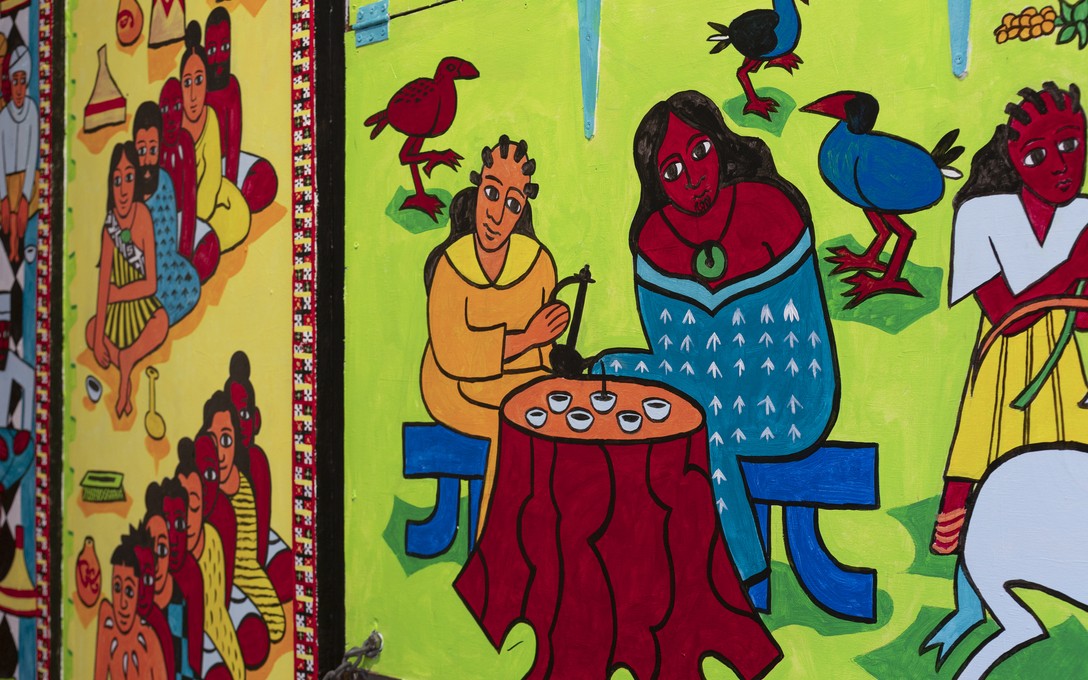
Keelin Bell, Karamu Meets Coffee, 2025. Photo courtesy of Cheska Brown.
now on
1 Jun
2025
–
1 Jun
2026
Keelin Bell
In 2025, Enjoy Contemporary Art Space partnered with our neighbour Mother of Coffee Ethiopian restaurant to commission a new mural between our premises. From an open call for proposals, we jointly selected Keelin Bell (Ngāti Maniapoto, Ngāti Porou, Ngāpuhi).
Keelin Bell's murals Karamu Meets Coffee and Angels Over Pōneke reflect a deep commitment to whakapapa, acknowledging the many layers of history, connection, and future potential embedded in place. In Karamu Meets Coffee, the alleyway between Enjoy and Mother of Coffee becomes a living canvas where the whakapapa of the whenua is brought forward as an active thread binding past to present. The mural weaves together narratives of Te Aro Pā, once a thriving site of agriculture and exchange, with stories from Ethiopia, the birthplace of coffee, foregrounding the indigenous knowledge systems of both cultures. The act of sharing kai and mātauranga across oceans becomes a form of hakari, a feast of relationship and reciprocity.
In another mural, Angels Over Pōneke, the angel icon of Mother of Coffee hovers over the city like kaitiaki, three atua-like figures floating above the familiar landscape of Te Whanganui-a-Tara. The view orients itself east toward Tangi Te Keo (Mt Victoria), reminding us that the whenua continues to speak. Coffee shrubs frame the skyline, anchoring the global to the local, and the present to ancestral lineages.
Together, these works by Keelin are a form of visual whakawhanaungatanga, bringing people together through shared stories, honouring the spiritual and cultural resonances between Māori and Ethiopian worldviews. They call to sustain a relational future built on care, memory, and mutual respect. In the heart of the city, Bell invites us to pause, listen, and remember that the whenua holds all our stories.
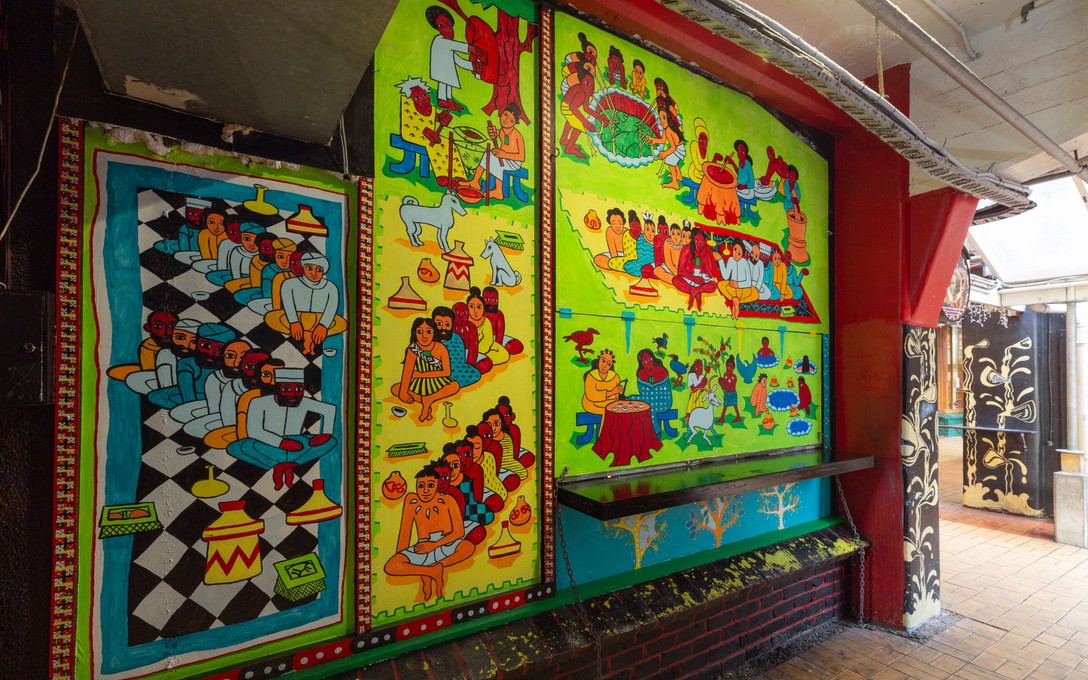
Keelin Bell, Karamu Meets Coffee, 2025. Photo courtesy of Cheska Brown.

Keelin Bell, Karamu Meets Coffee, 2025. Photo courtesy of Cheska Brown.
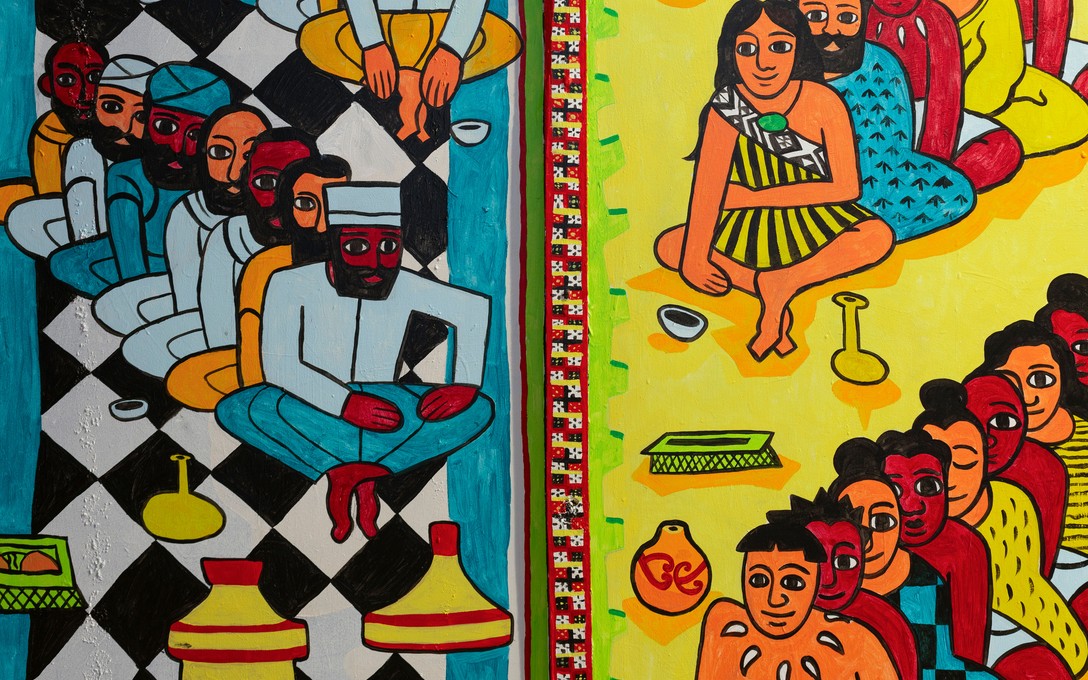
Keelin Bell, Karamu Meets Coffee, 2025. Photo courtesy of Cheska Brown.
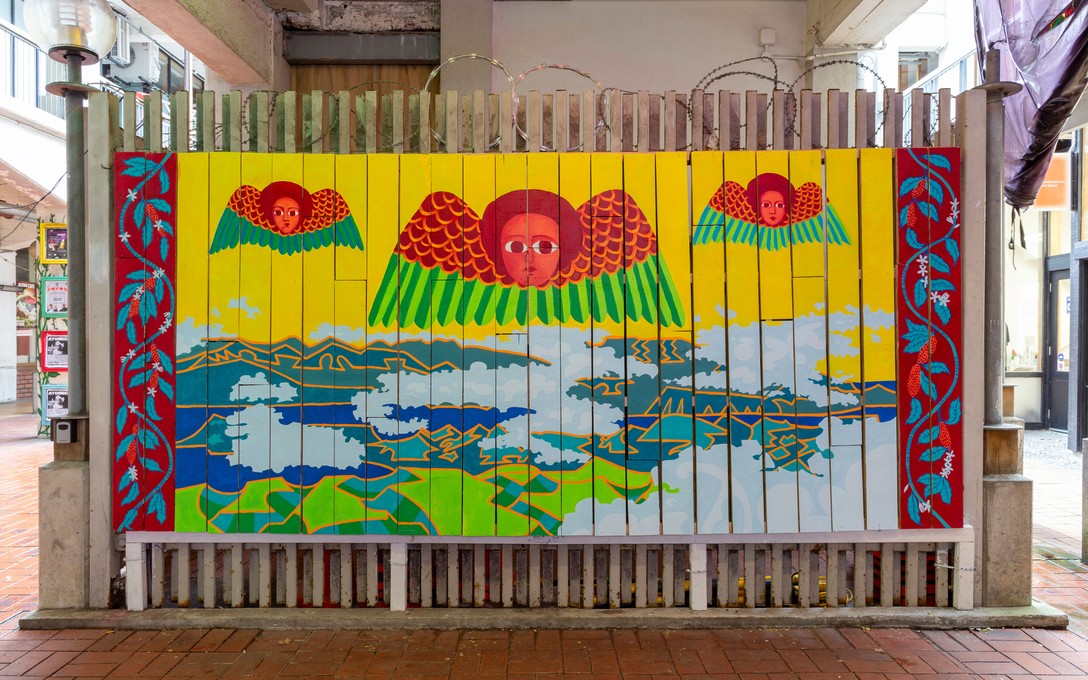
Keelin Bell, Angels Over Pōneke, 2025. Photo courtesy of Cheska Brown.
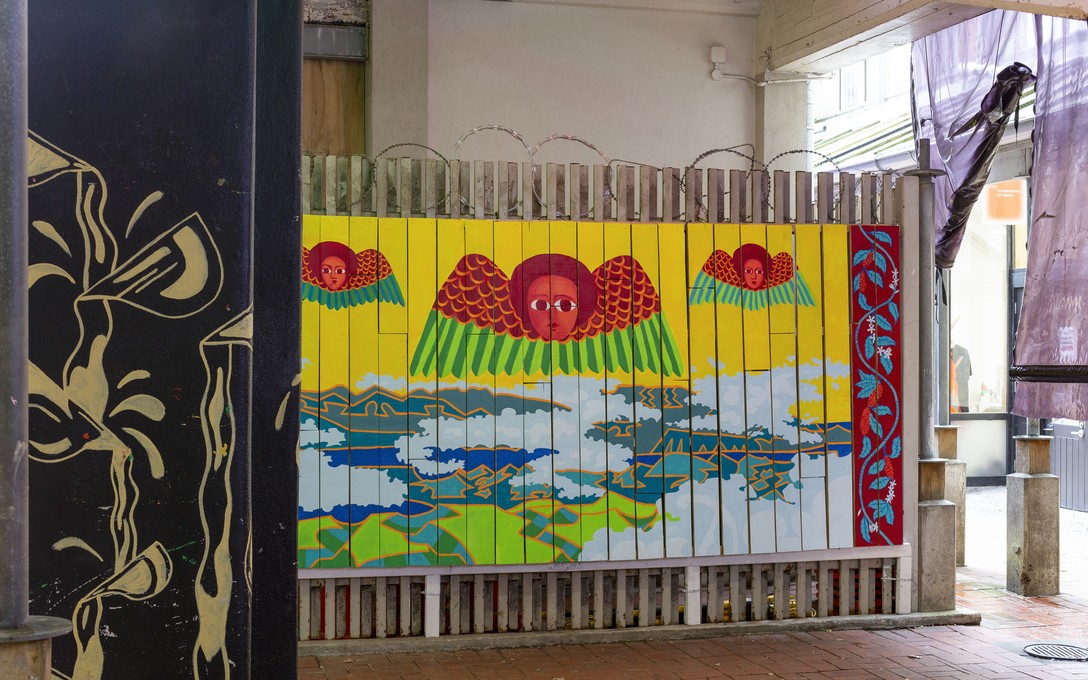
Keelin Bell, Angels Over Pōneke, 2025. Photo courtesy of Cheska Brown.
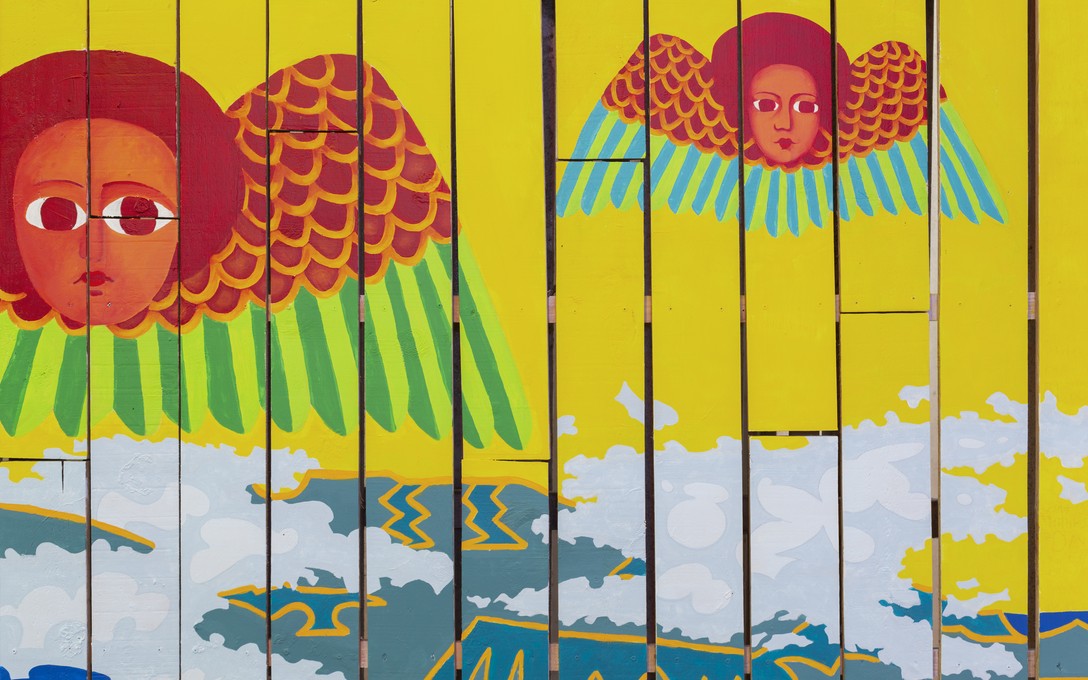
Keelin Bell, Angels Over Pōneke, 2025. Photo courtesy of Cheska Brown.
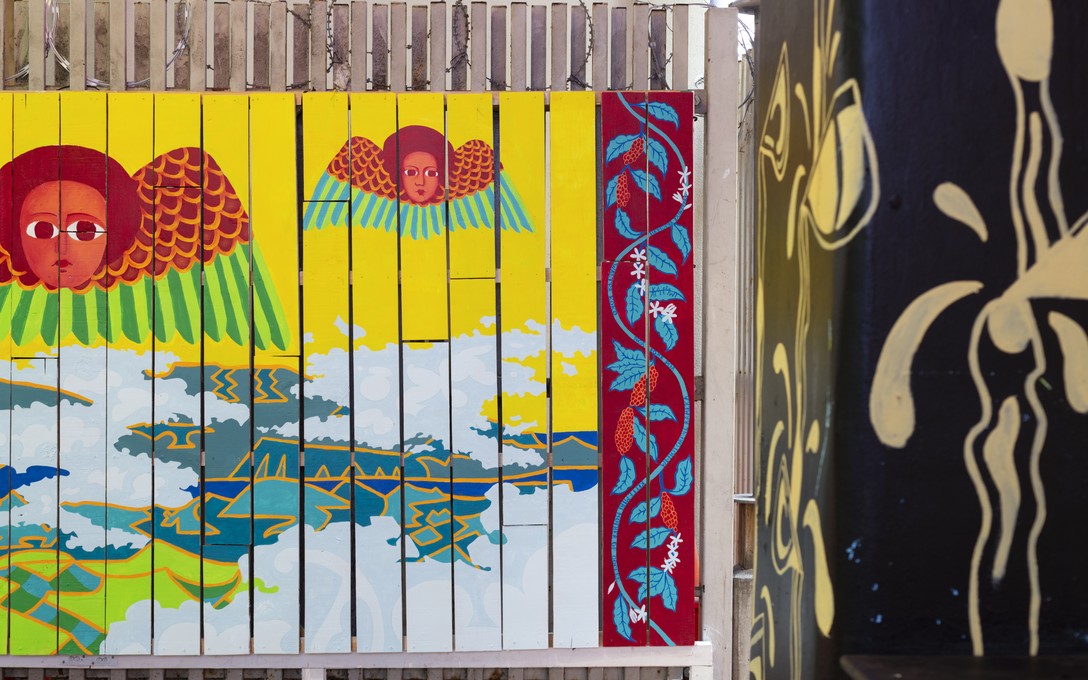
Keelin Bell, Angels Over Pōneke, 2025. Photo courtesy of Cheska Brown.
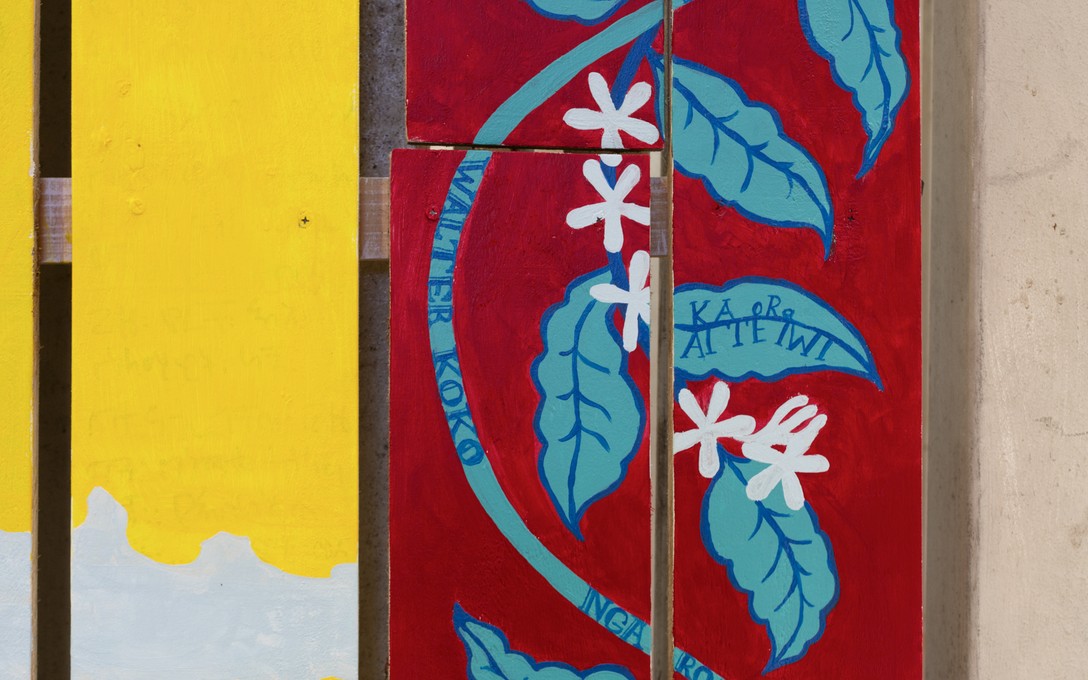
Keelin Bell, Angels Over Pōneke, 2025. Photo courtesy of Cheska Brown.
Keelin Bell (Ngāti Maniapoto, Ngāti Porou, Ngāpuhi) is a multi-disciplinary artist whose practice centres on sharing pūrakau with the community through vibrant, engaging illustrations. Through his work, Keelin strives to celebrate and preserve mātauranga Māori in fresh and dynamic ways.
Ngā mihi nui ki a koutou Bella, Emily, Hāmuera, Leilani, Ngāroma, Rosie, Ruby, Walter and Wi for their help with the mural.
An Ethics of Witnessing
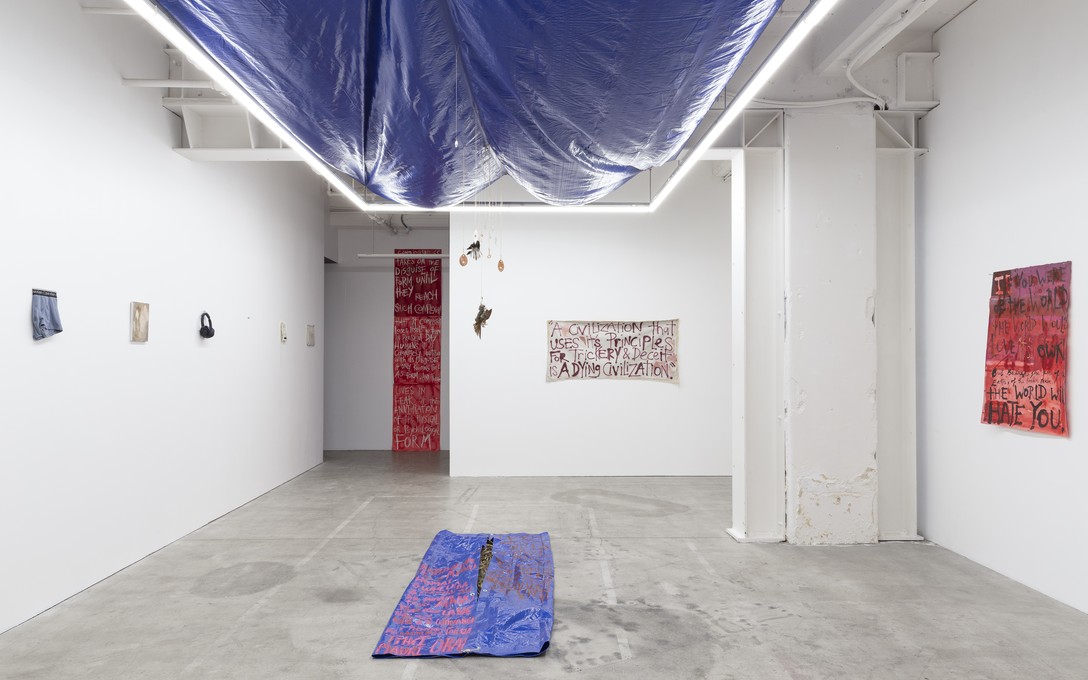
The Ethics of Witnessing, installation view. Image courtesy of Cheska Brown.
now on
5 Jul
–
16 Aug
Aroha Matchitt-Millar, Fetishini, Frankie Matchitt-Millar, p Walters
Drawing from Roberto Esposito’s theory of Immunitas, the exhibition critiques the societal urge to immunise or protect itself by way of exclusion, through institutions such as borders, prisons, and medical systems. These colonial systems of control determine who gets to participate in society and who doesn’t, whose lives are preserved and whose are disposable. The artists in An Ethics of Witnessing map systems that govern the body, who is grieved and who is forgotten. Witnessing becomes a political act, a practice of staying present with what institutions may hope to erase.
The ideas contemplated in An Ethics of Witnessing resonate with the histories of AIDS in Aotearoa. The works echo a whakapapa of care networks, activist resistance, and the cultural labour of remembrance in the face of stigma and neglect. An Ethics of Witnessing holds space for what is unfinished, and acts as a meditation on our histories. In this context, queerness is positioned as a relational force: a vital messiness grounded in the ethics of proximity.
Aroha Matchitt-Millar’s background in contemporary jewellery and raranga have built the foundation upon which Tīwaiwaka takamiri turuma, he tangata kaikino stands. The artist’s mahi is an exploration of what it means to be an urban Māori—stuck in the city but “needing to work in te taiao.” [1]
One tarp representing Ranginui descends from the ceiling, as a second symbolising Papatūānuku sits on the floor, embracing the rotting harakeke within. Suspended from Rangi is muka stripped from the same harakeke and painted atop Papa by p Walters is a karakia composed by Matchitt-Millar. The gallery, with its concrete ceiling, floor, and fluorescent lighting, is our urban te ao Mārama. Held in the space between ngā atua is the deconstructed body of the artist.
In this installation, sensuality is implicit rather than explicit. Matchitt-Millar has researched pre-colonial manu pōria, an adornment often made from pounamu or bone that was placed around the feet of captive manu in order to domesticate them. Here, manu pōria are reimagined in copper and silver. They hang from muka, arranged in accordance with the artist’s own body as if she were laying down in the space. Like these manu pōria, the bodies of wāhine Māori have had to adapt over time. Overt sexuality, once celebrated, became repressed as Aotearoa was colonised. The display of various orifices of the artist’s body are a step towards honouring the importance of wāhine Māori bodies—sensuality that is innate even in absence.
The bodies of two manu—endemic and introduced—are also included in the installation. A tīwaiwaka and a song thrush have been pelted and skinned by Matchitt-Millar, who acknowledges each manu as a gift while also lamenting the vastly different relationship she has with them than her tīpuna would have had with the manu they cared for. There is tension with arguments made by Robert Esposito in Immunitas, who states that “if the body is the privileged locus for the unfolding of life, it is also the place where the presence of death is most noticeable…The fact is, death and the body do not go together for very long. Their encounter is only momentary: once dead, the body does not endure.” [2]
It is true that Matchitt-Millar espouses life and death in her mahi toi; however, the bodies in Tīwaiwaka takamiri turuma, he tangata kaikino—Ranginui, Papatūānuku, the artist themself, tīwaiwaka and song thrush—do endure, through preservation and memory.
[1] Aroha Matchitt-Millar, Enjoy blog post.
[2] Robert Esposito, Immunitas, (Cambridge: Polity Press, 2011) 113.
Frankie Matchitt-Millar’s installation can be understood as an articulation of what scholars such as José Esteban Muñoz and Diane Chisholm frame as queer temporal and spatial reimaginings, gestures that resist linear histories and instead activate constellational, affective, and speculative mappings of self, place, and ancestry. Installed at the artist’s own height, the work stages an embodied reclamation of space, collapsing the boundaries between autobiography, ritual, and political presence. Each item—underwear, a cigarette stub smoked at Carmen Rupe’s memorial bench, an ex-lover’s t-shirt, a muka-bound diary—carries the residue of lived experience, becoming more than object: they are offerings, reliquaries of emotion and survival. Kōkowai pressed into the soles of old Adidas shoes speaks to tūrangawaewae and movement, while the binding of diary pages in muka materialises an intimate intersection of toi Māori and queer self-representation.
Through these materials, Matchitt-Millar transforms minimalist formal strategies historically associated with white, male, often depersonalised art practices into something grounded in whenua, whakapapa, and wairua. This is not minimalist in its refusal of the body, but maximal in its invocation of it. The work becomes a tactile ethics of being seen, remembered, and felt, a demand to witness sovereignty.
Within this assemblage, a deeper invocation emerges: a search for tūrangawaewae in the wake of queer whakapapa ruptured by the AIDS epidemic. Here, Matchitt-Millar gestures toward the intergenerational gaps left by the loss of queer elders, and the urgent necessity of speculative lineage-building. The installation functions as both a personal altar and a collective map, a space where memory and mourning blur with desire and continuity.
Ngāpuhi kōwhao rau,
Ngāpuhi taniwha rau.
Ngāpauhi of a hundred holes,
Ngāpuhi of a hundred taniwha.
This whakataukī references the diversity of people and opinions in the many hapū that make up te whare tapu o Ngāpuhi. It speaks to the fiercely fought for independence within Ngāpuhi but also the collectivity that we lean upon when facing larger challenges.
Often misunderstood for violent and dangerous beings, taniwha are kaitiaki who guide us, generally in relation to te taiao, and most notably in bodies of water. They are a reflection of their environment and how we as humans treat it. Nurturing taniwha alert us of danger—disregarding such warnings is when we get into trouble.
In The Ethics of Witnessing, p Walters’ capitalised text can be read as a warning, an omen, a dare. Their paintings and drawings extend throughout the gallery. Pieces of scripture from the bible, excerpts from spiritualist books, pop culture references and parts of their research are rendered by the artist in red. Red: the colour of blood, rangatiratanga and Tonga. Red Dragon or Tarakona Whero is a painting that encapsulates Walters’ practice: loving and defiant. Her shoulders are pulled back in a vigilant pose. Although her jaw houses sharp niho capable of tearing flesh to pieces, she does not have it open to attack—instead, her tongue protrudes as if to taste the air and whenua around her. Her human-like upper body morphs into a serpentine shape with numerous vertebrae dominating the painting. To her left is END OF THE WORLD and to her right is Mother’s Daughter.
IF YOU WERE
OF THE WORLD
THE WORLD WOULD
LOVE IT’S OWN
But Because you are of the Earth, of the timeless realm
THE WORLD WILL
HATE YOU.
HALLELUJAH
I’M A FREAK!
I’M A FREAK!
HALLELUJAH
As noted by Walters in their blog post, the word ‘world’ derives from old Germanic meaning ‘age of man’. Red Dragon or Tarakona Whero, like her creator, is ushering a new age. Theirs will be an age of marching with Césaire at Ihumātao at the Hīkoi mo te Tiriti and then displaying it in a gallery. An age of honouring those you are exhibiting with by painting the karakia that they composed onto the tarp they use to collect para harakeke and painting a custom content warning for their R18 performance. An age of untitled drawings that show the artist’s process displayed amongst the mess left behind from said performance. And most importantly, an age of unapologetic Indigeneity.
The Ethics of Witnessing [ROT] is a performance by Fetishini with Ys Blue, Chloe Jaques and Kat Lang. Each performer embodies a disintegrating bodily system: blood, liver and skin—organs not only represented but ruptured through gesture, material and sonic intensity dissolving the coherence of the body into pulsing, leaking, reverberating matter. Channelling the aesthetics of horror and drawing on the grotesqueness of bodily transformation and visceral performance, The Ethics of Witnessing [ROT] addresses ecological collapse using the metaphor of anatomical demise. Blood, liver and skin are rendered toxic and excessive, corrupted by the same forces that poison the earth.
Past Event
The Ethics of Witnessing [ROT]
Enjoy presents The Ethics of Witnessing [ROT] a one night only performance by Fetishini with Ys Blue, Chloe Jaques and Kat Lang.
More info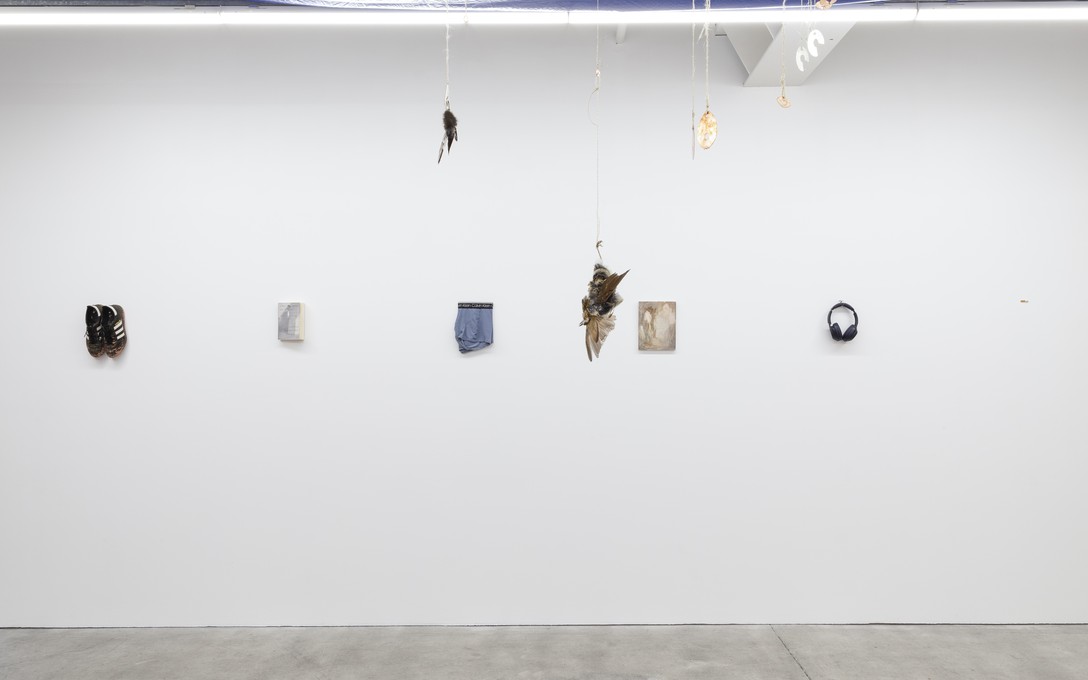
Frankie Matchitt-Millar, The Ethics of Witnessing, installation view. Image courtesy of Cheska Brown.
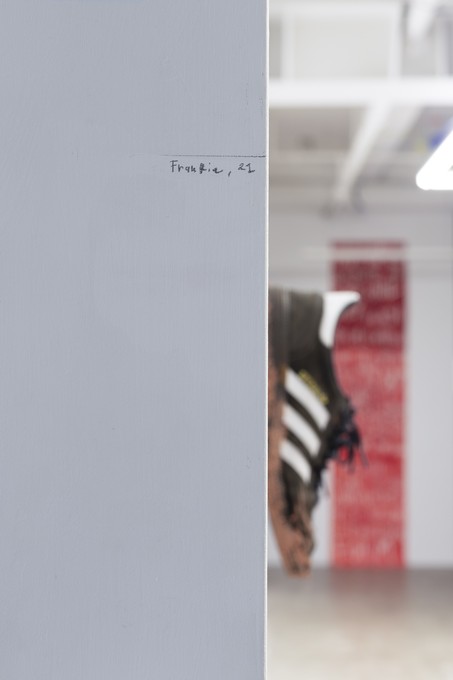
Frankie Matchitt-Millar, The Ethics of Witnessing, detail. Image courtesy of Cheska Brown.
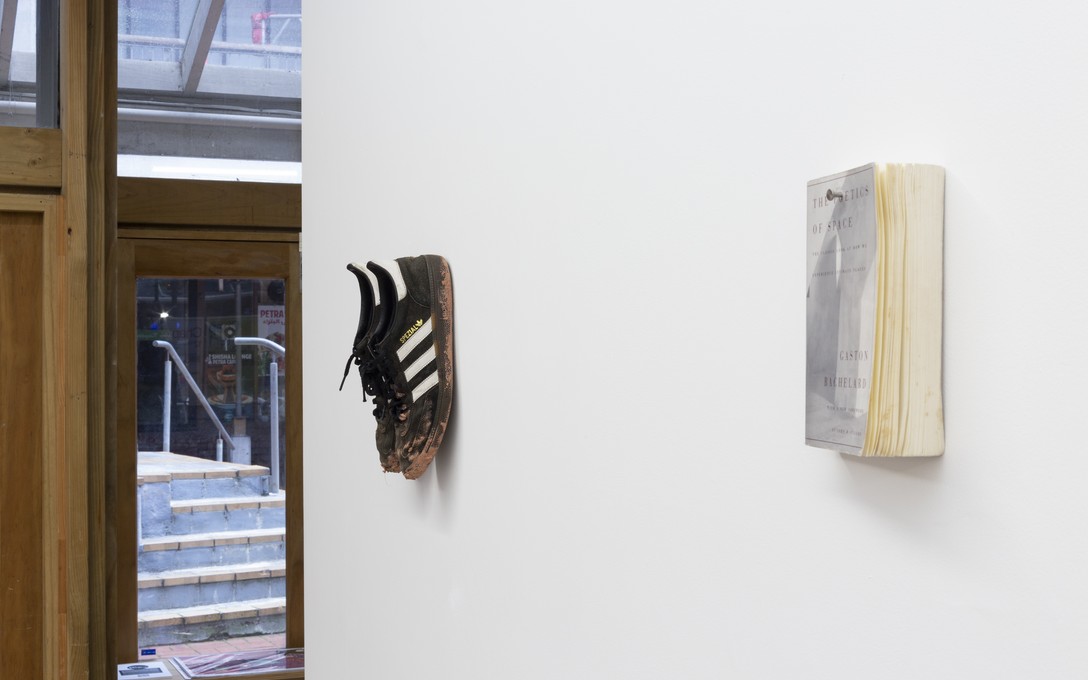
Frankie Matchitt-Millar, Adidas Special & Poetics of Space. Image courtesy of Cheska Brown.
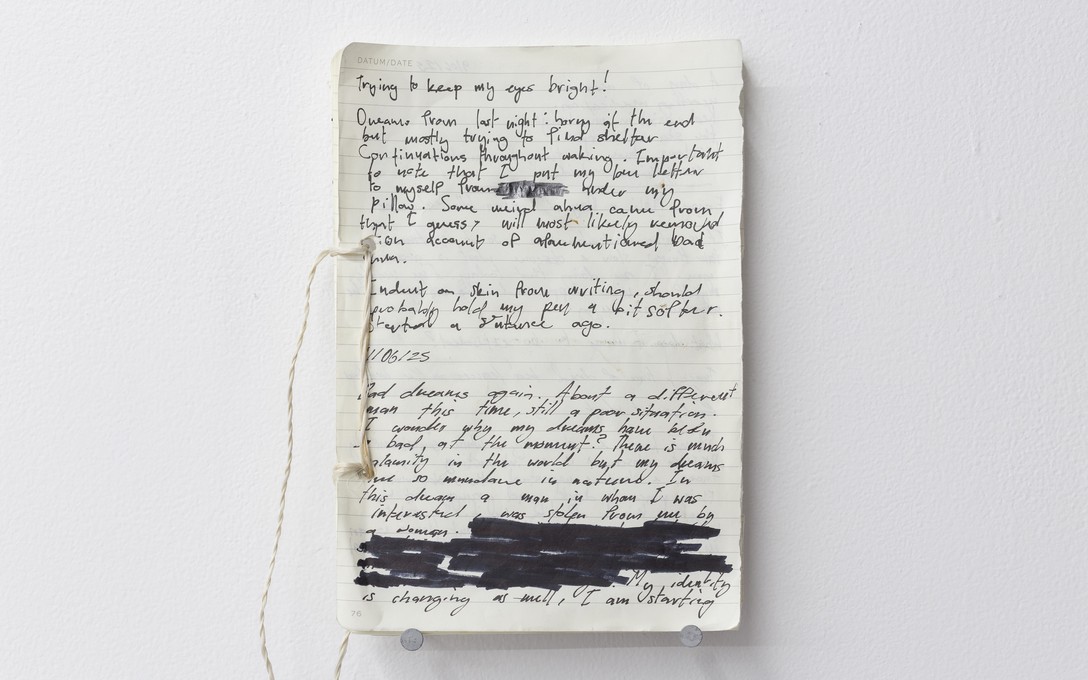
Frankie Matchitt-Millar, Read Me. Image courtesy of Cheska Brown.
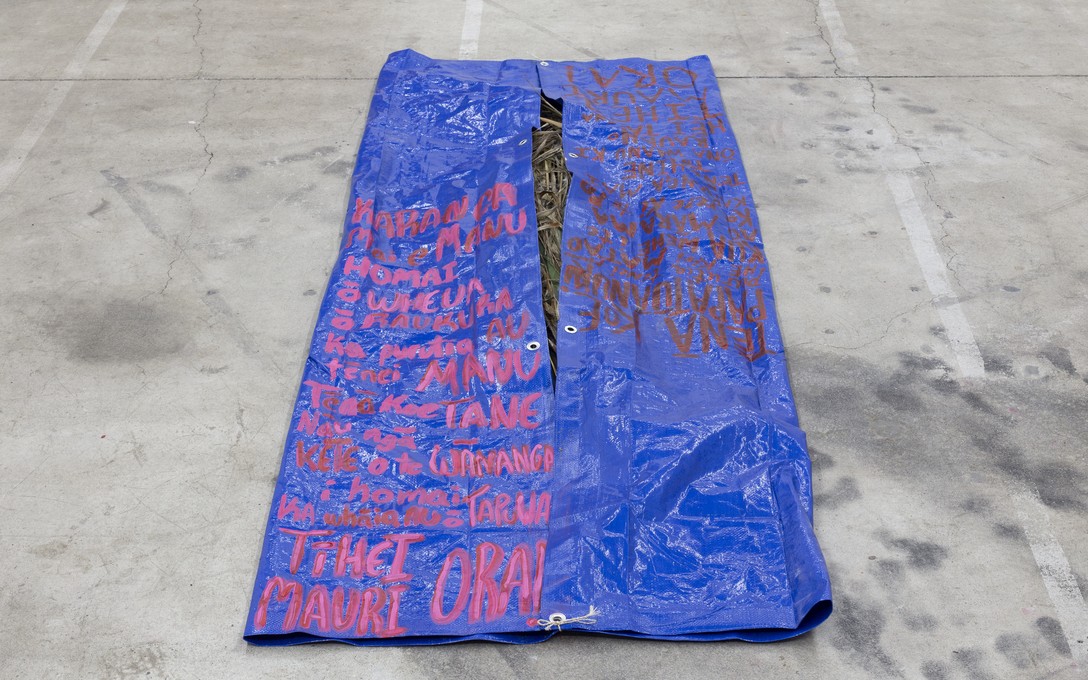
Aroha Matchitt-Millar, Tīwaiwaka takamiri turuma, he tangata kaikino. Image courtesy of Cheska Brown.
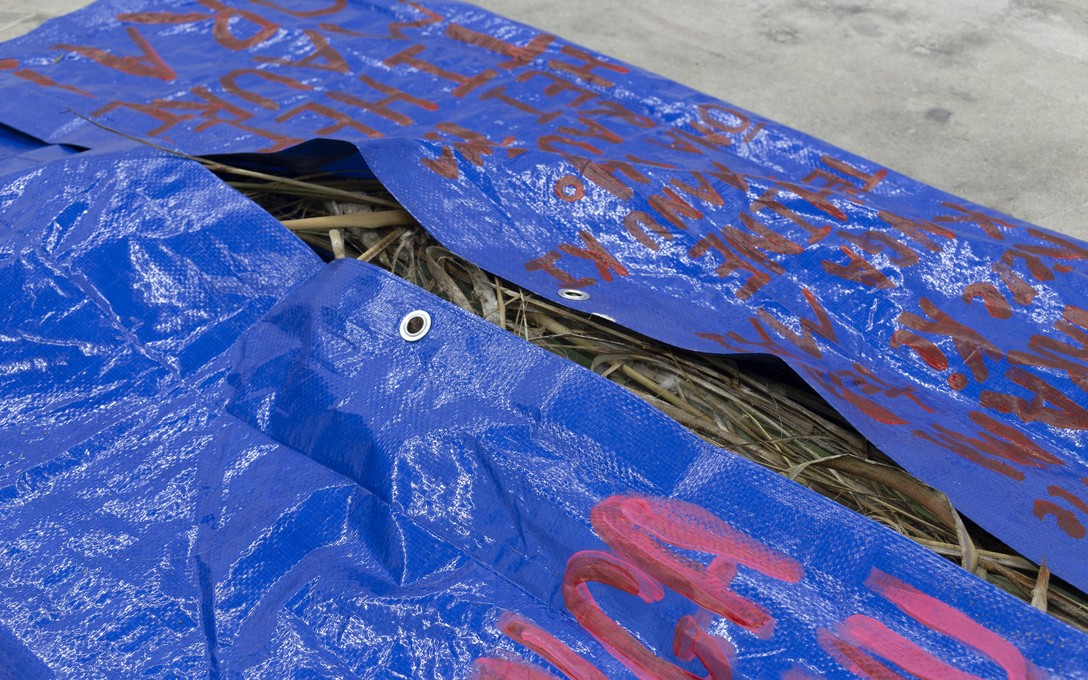
Aroha Matchitt-Millar, Tīwaiwaka takamiri turuma, he tangata kaikino. Image courtesy of Cheska Brown.
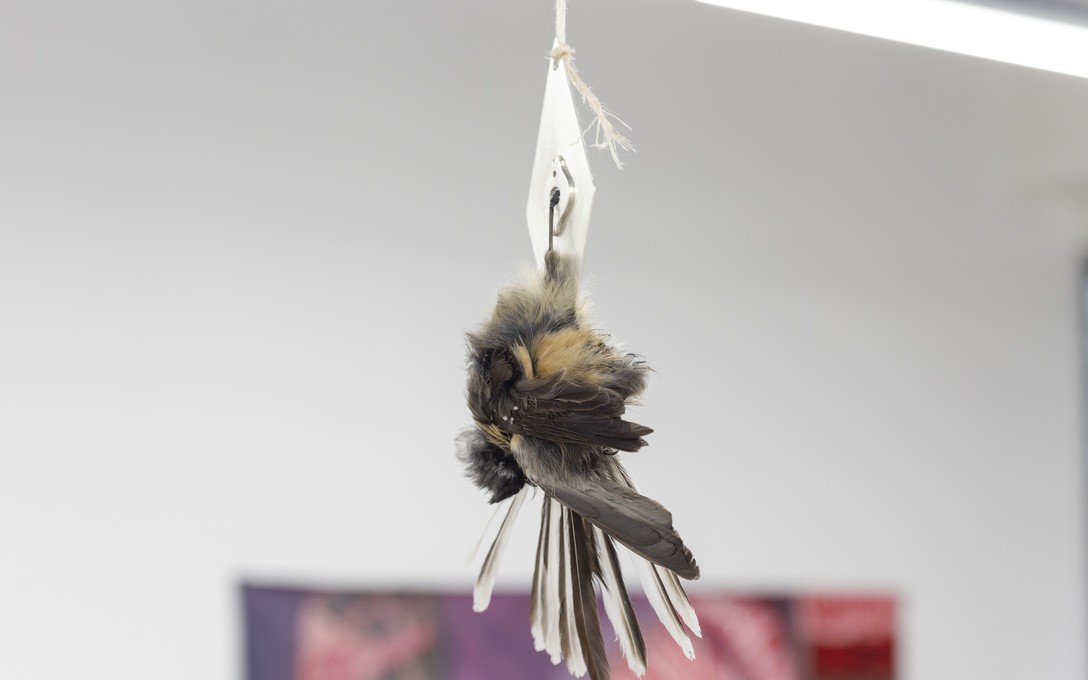
Aroha Matchitt-Millar, Tīwaiwaka takamiri turuma, he tangata kaikino. Image courtesy of Cheska Brown.
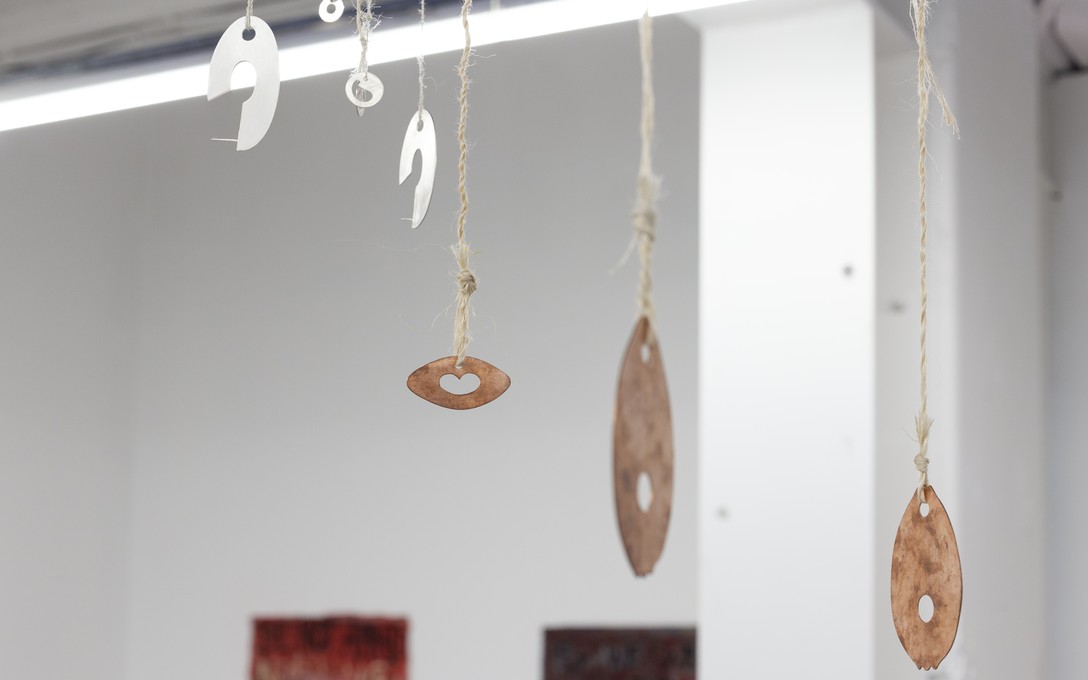
Aroha Matchitt-Millar, Tīwaiwaka takamiri turuma, he tangata kaikino. Image courtesy of Cheska Brown.
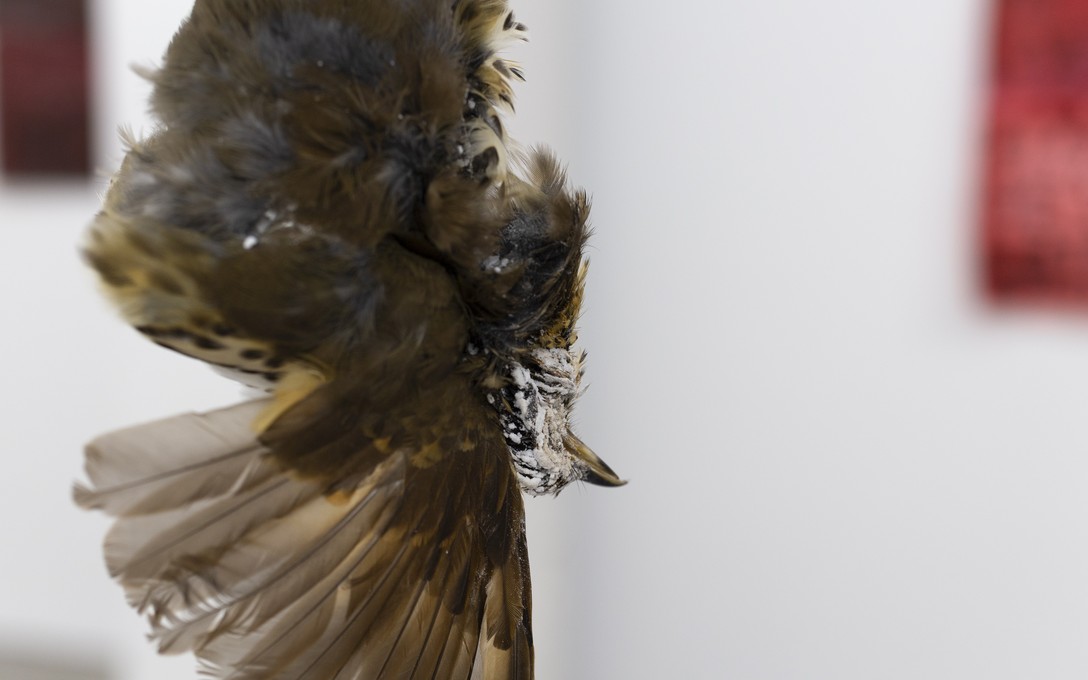
Aroha Matchitt-Millar, Tīwaiwaka takamiri turuma, he tangata kaikino. Image courtesy of Cheska Brown.

Aroha Matchitt-Millar, Tīwaiwaka takamiri turuma, he tangata kaikino and p Walters, Césaire at Ihumātao & angels and faggots. Image courtesy of Cheska Brown.
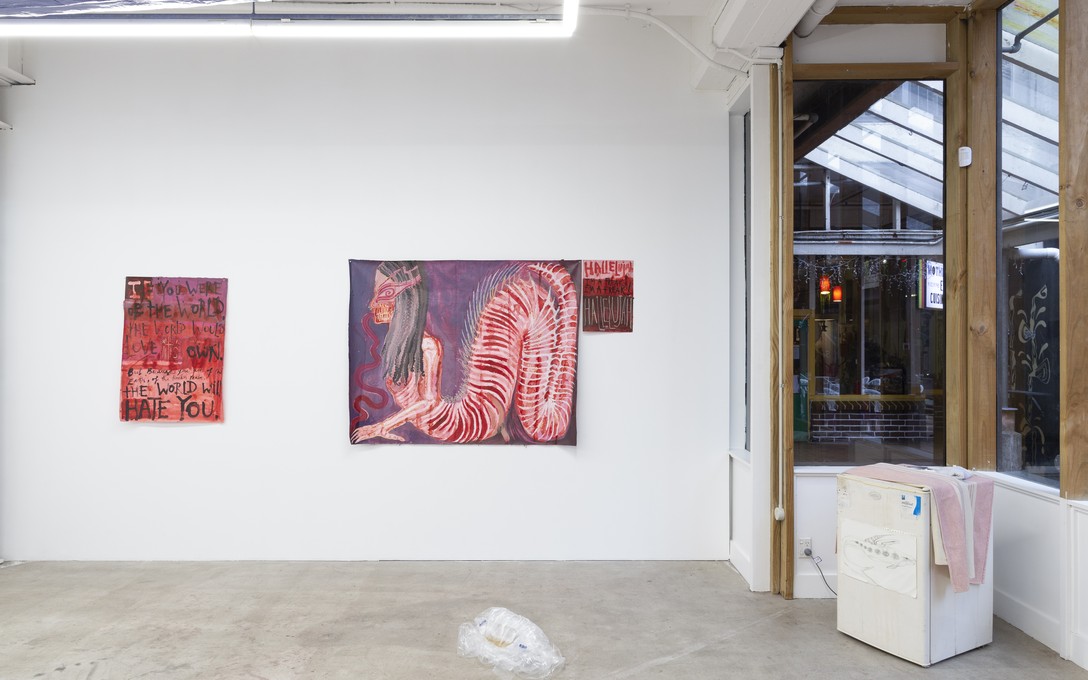
The Ethics of Witnessing, installation view. Image courtesy of Cheska Brown.
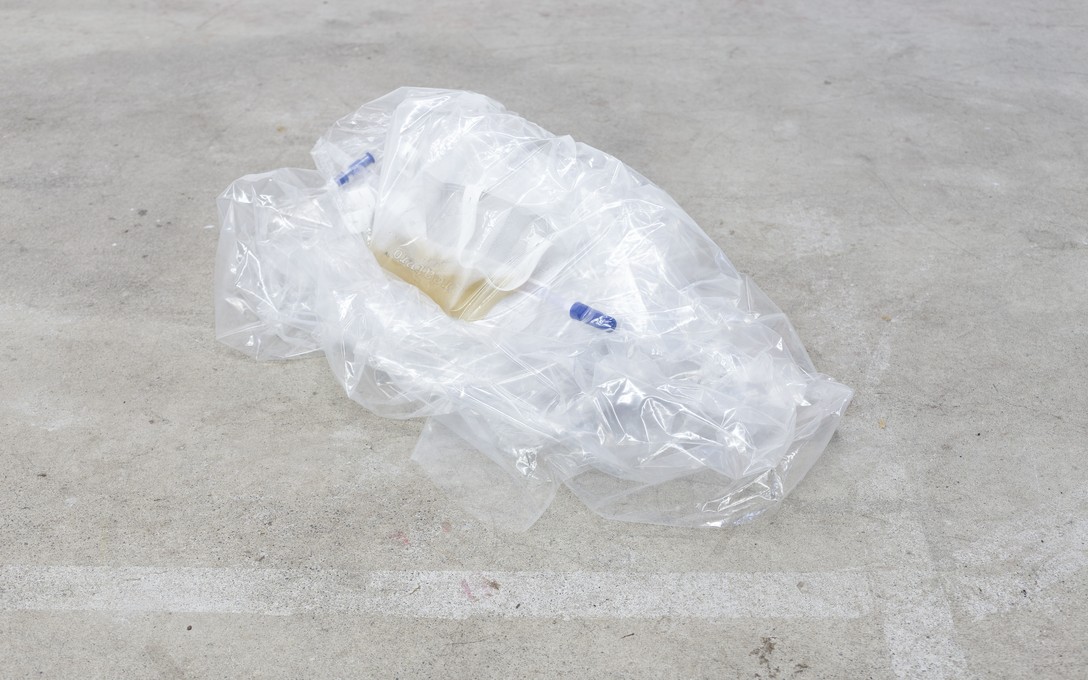
The Ethics of Witnessing, installation view. Image courtesy of Cheska Brown.
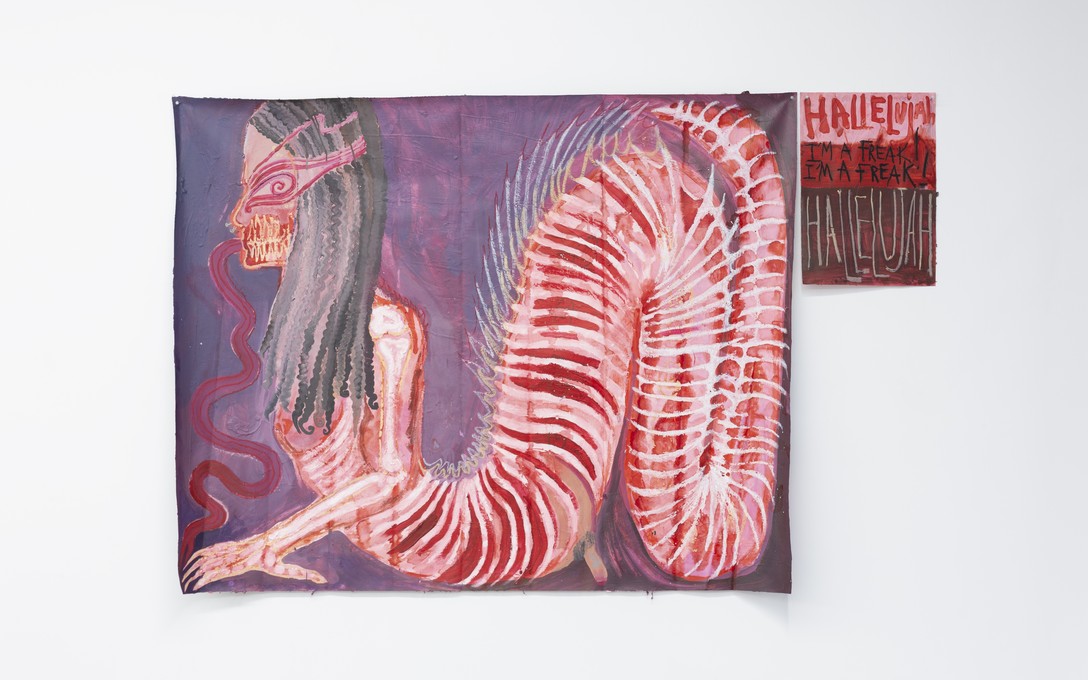
p Walters, Red Dragon or Tarakona Whero & Mother's Daughter. Image courtesy of Cheska Brown.
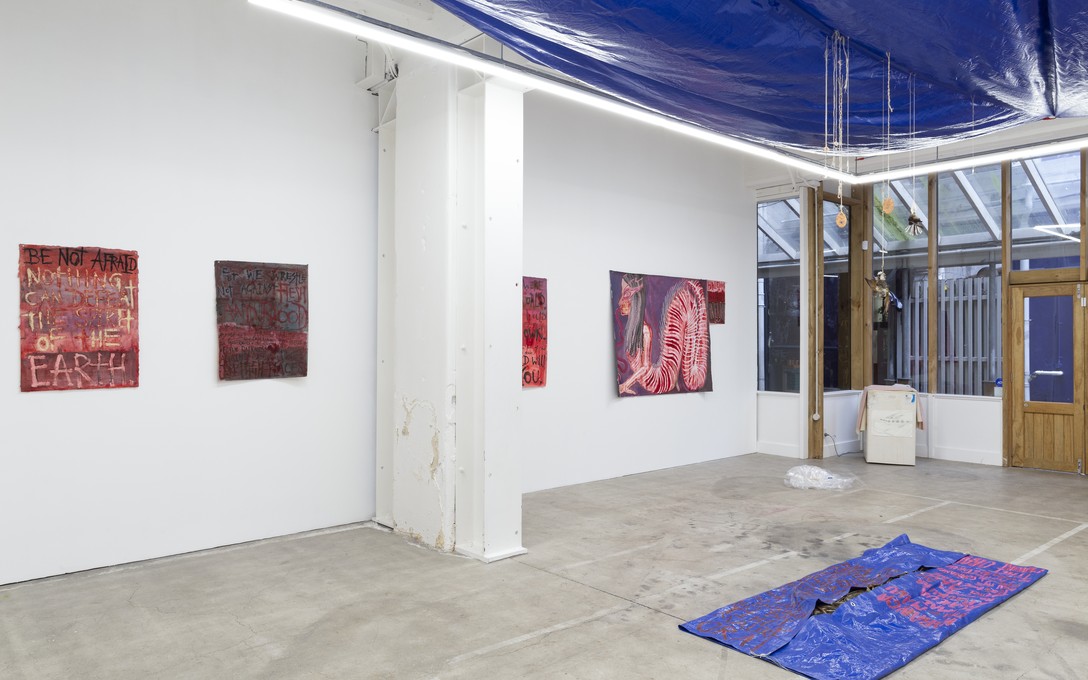
The Ethics of Witnessing, installation view. Image courtesy of Cheska Brown.
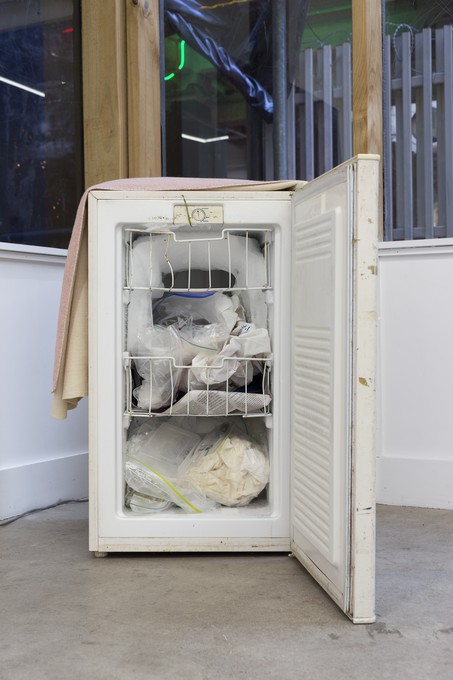
The Ethics of Witnessing, installation view. Image courtesy of Cheska Brown.
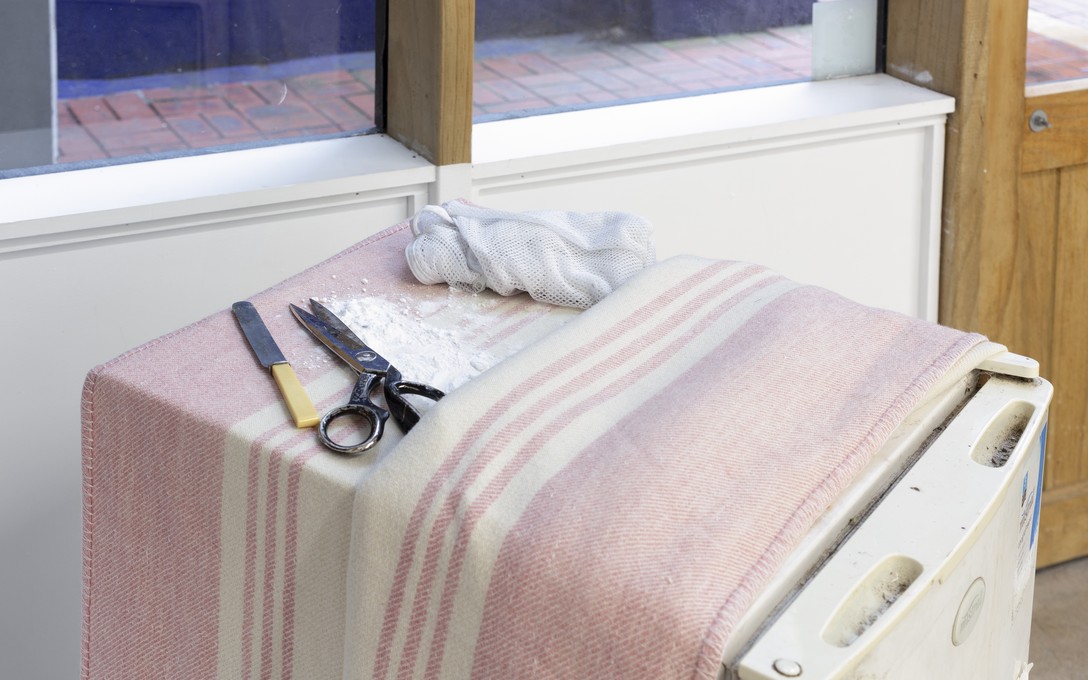
The Ethics of Witnessing, installation view. Image courtesy of Cheska Brown.
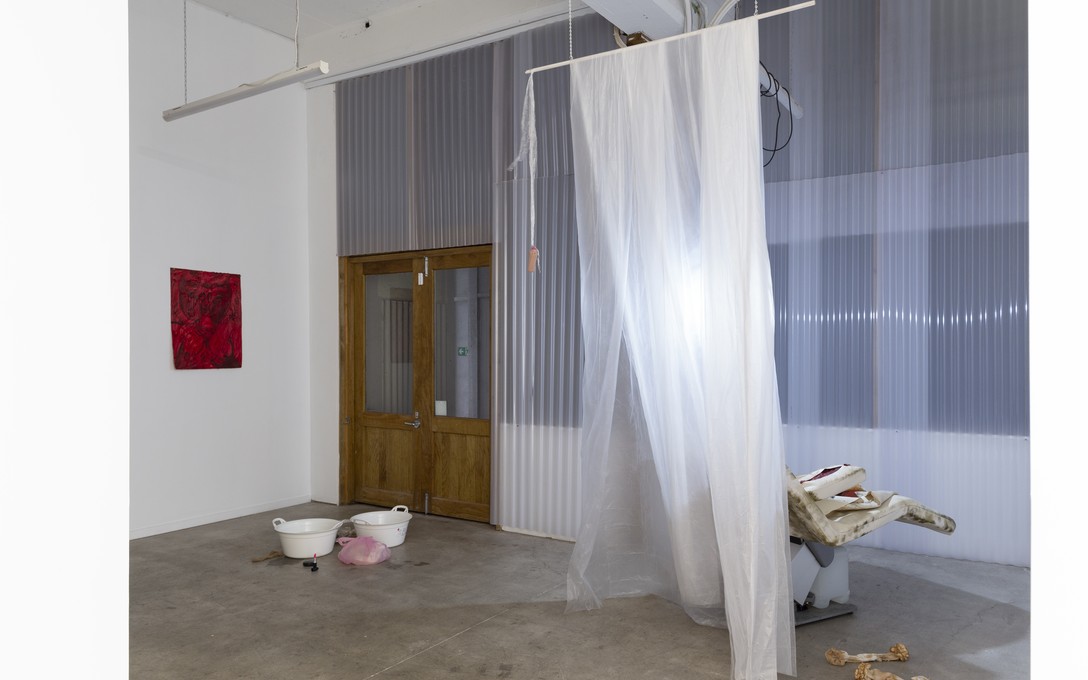
Fetishini, Skin & Liver, installation view. Image courtesy of Cheska Brown.
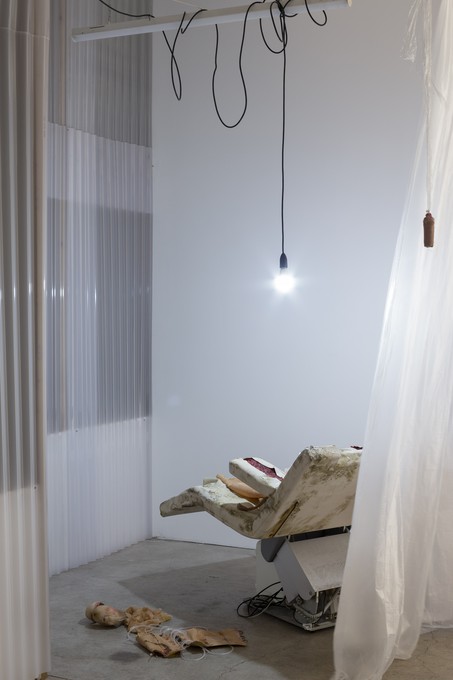
Fetishini, Skin, installation view. Image courtesy of Cheska Brown.
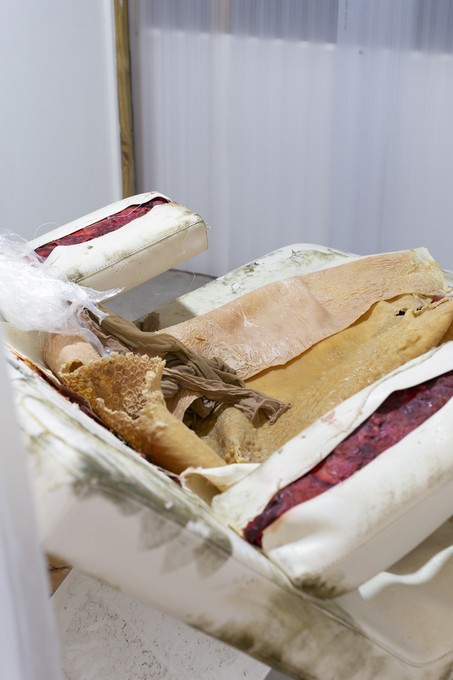
Fetishini, Skin, detail. Image courtesy of Cheska Brown.
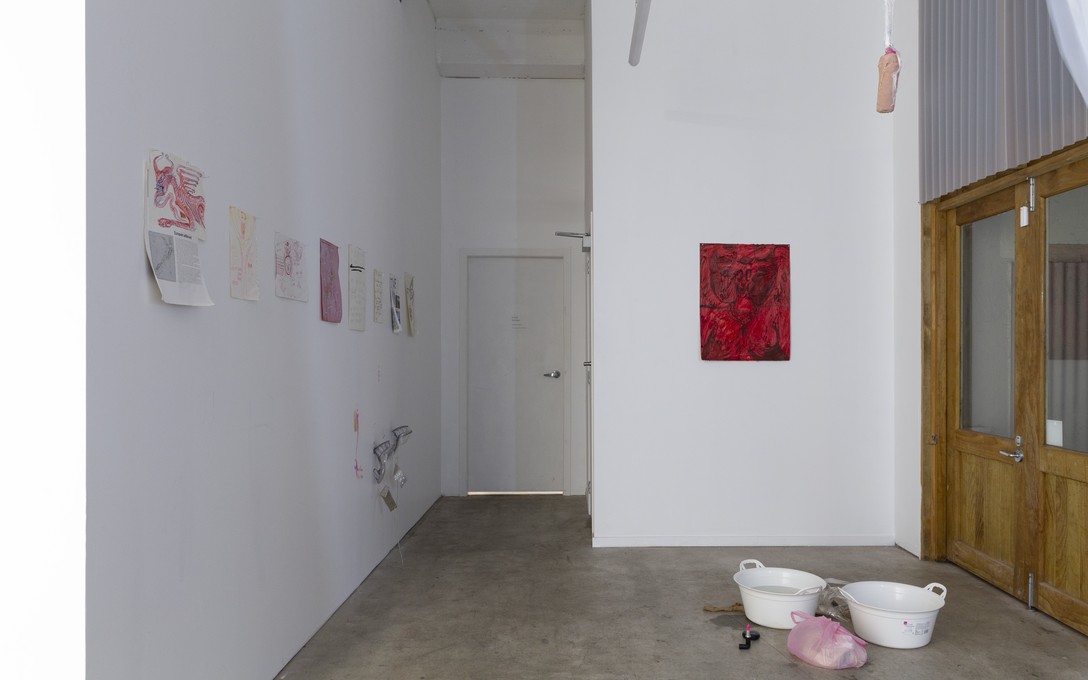
The Ethics of Witnessing, installation view. Image courtesy of Cheska Brown.

Fetishini, Liver, detail. Image courtesy of Cheska Brown.
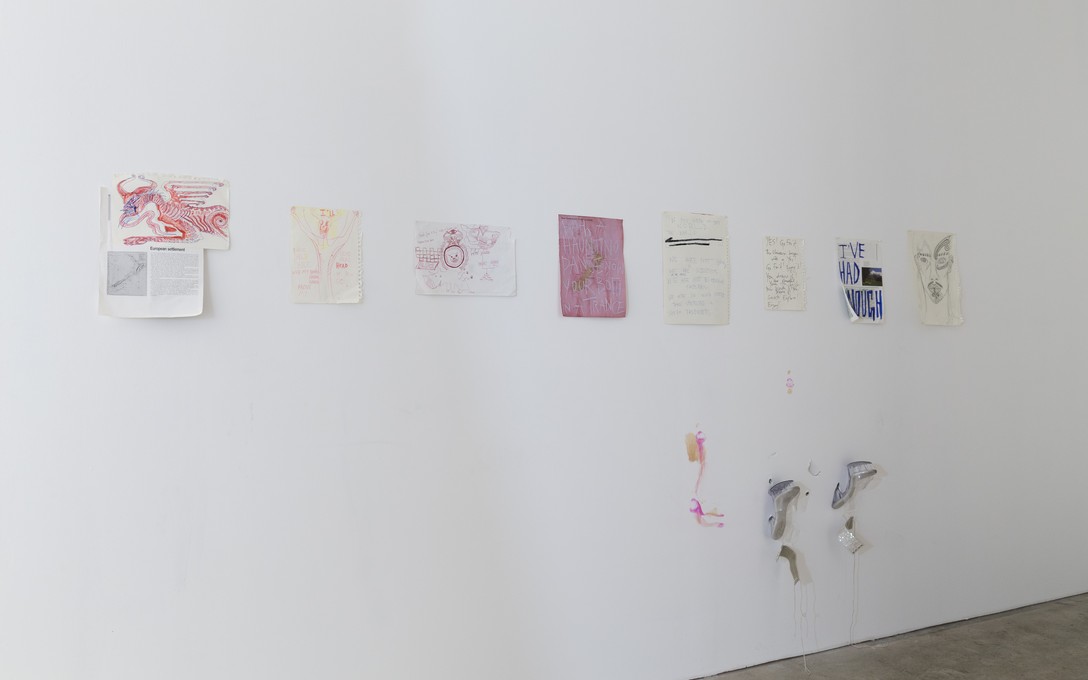
Fetishini and p Walters, The Ethics of Witnessing, installation view. Image courtesy of Cheska Brown.
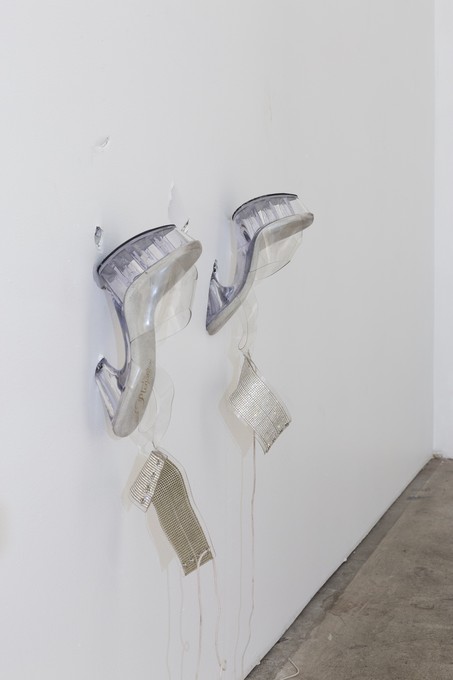
Fetishini, Liver, detail. Image courtesy of Cheska Brown.
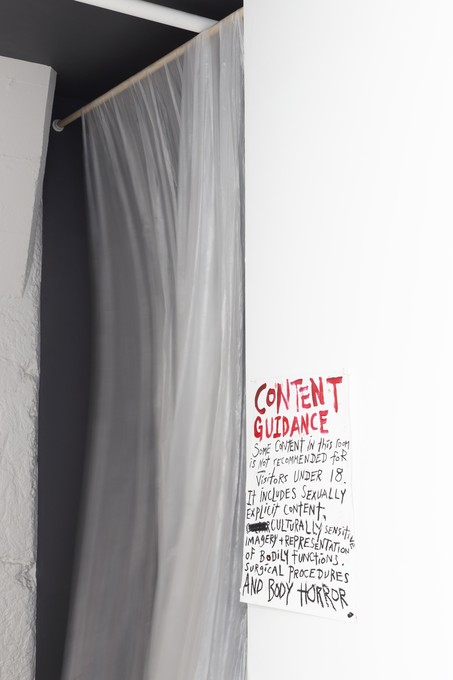
The Ethics of Witnessing, installation view. Image courtesy of Cheska Brown.
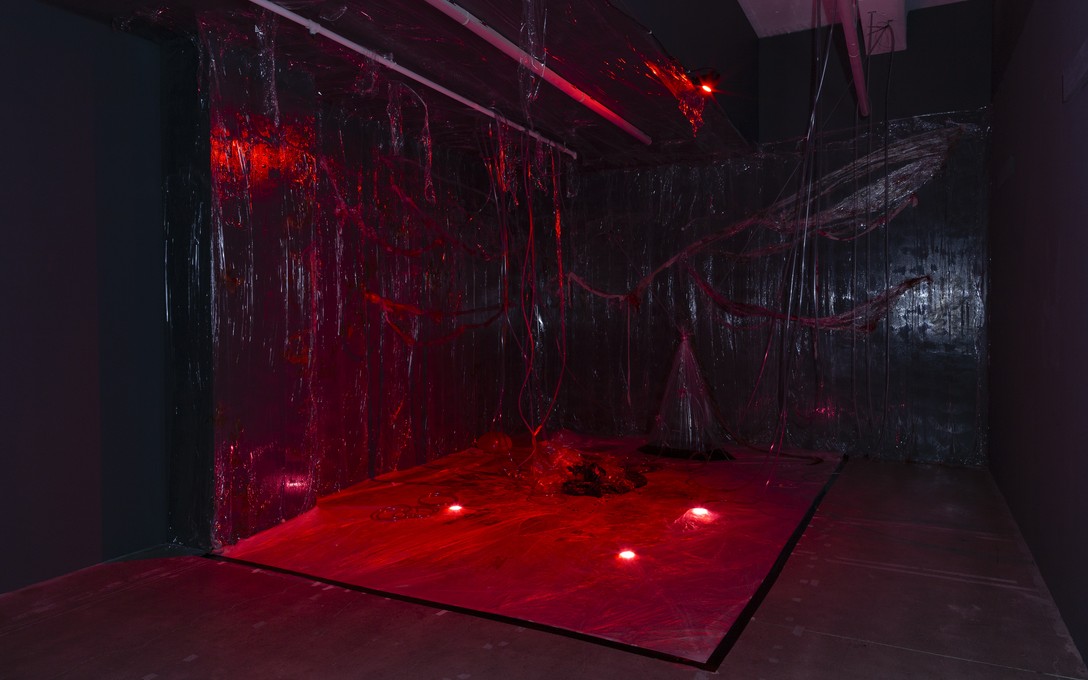
Fetishini, Blood, installation view. Image courtesy of Cheska Brown.
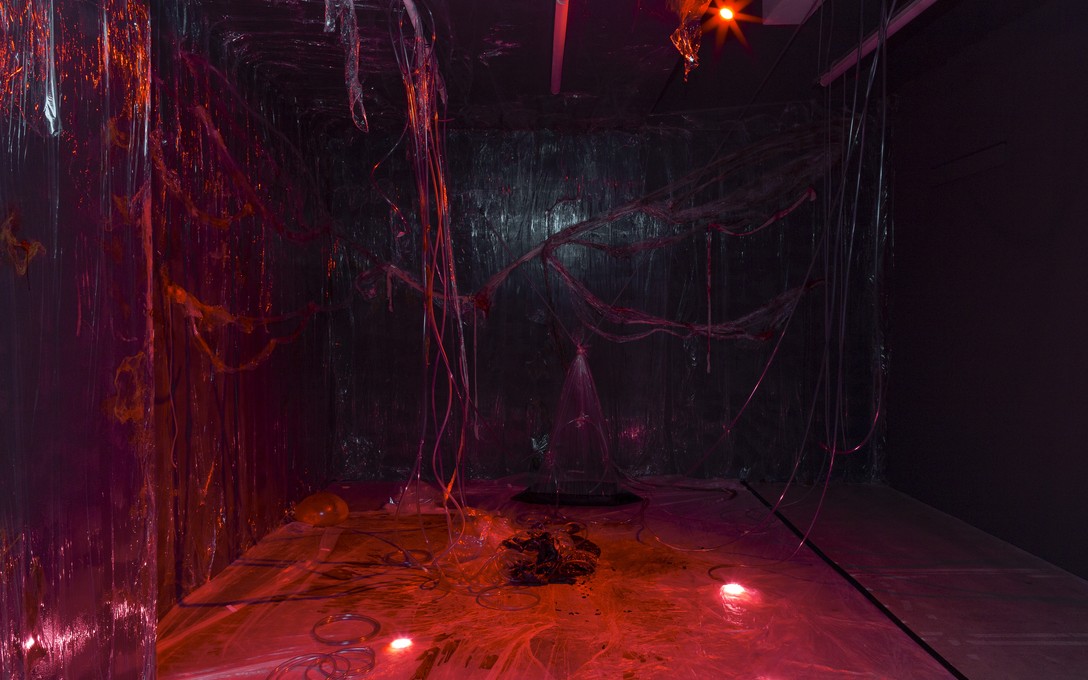
Fetishini, Blood, installation view. Image courtesy of Cheska Brown.
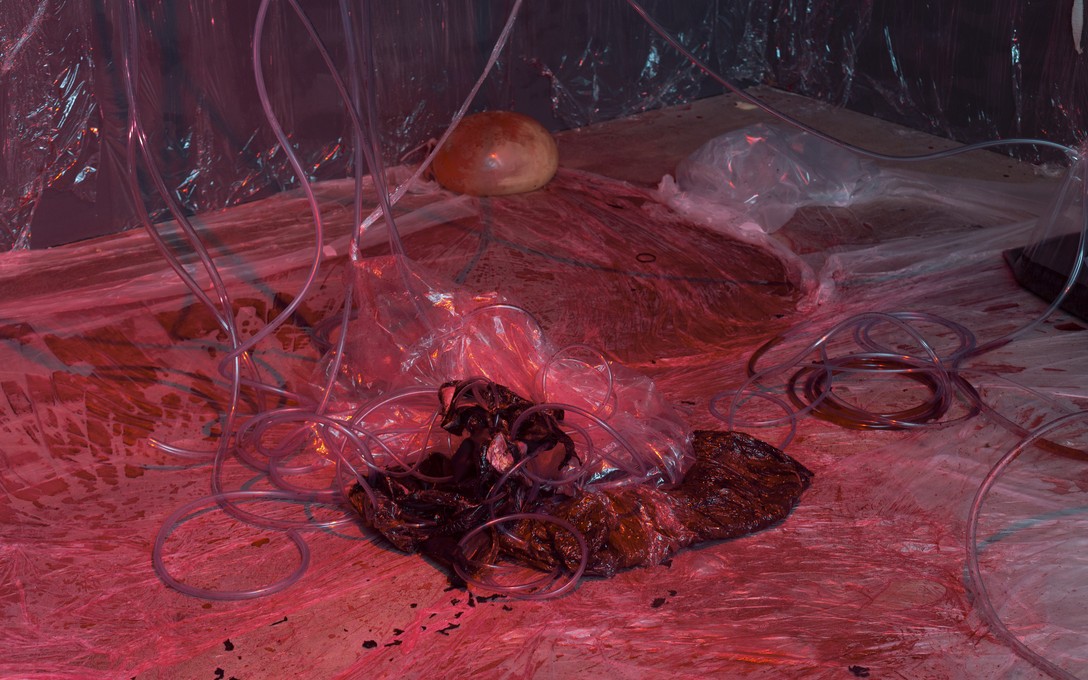
Fetishini, Blood, detail. Image courtesy of Cheska Brown.
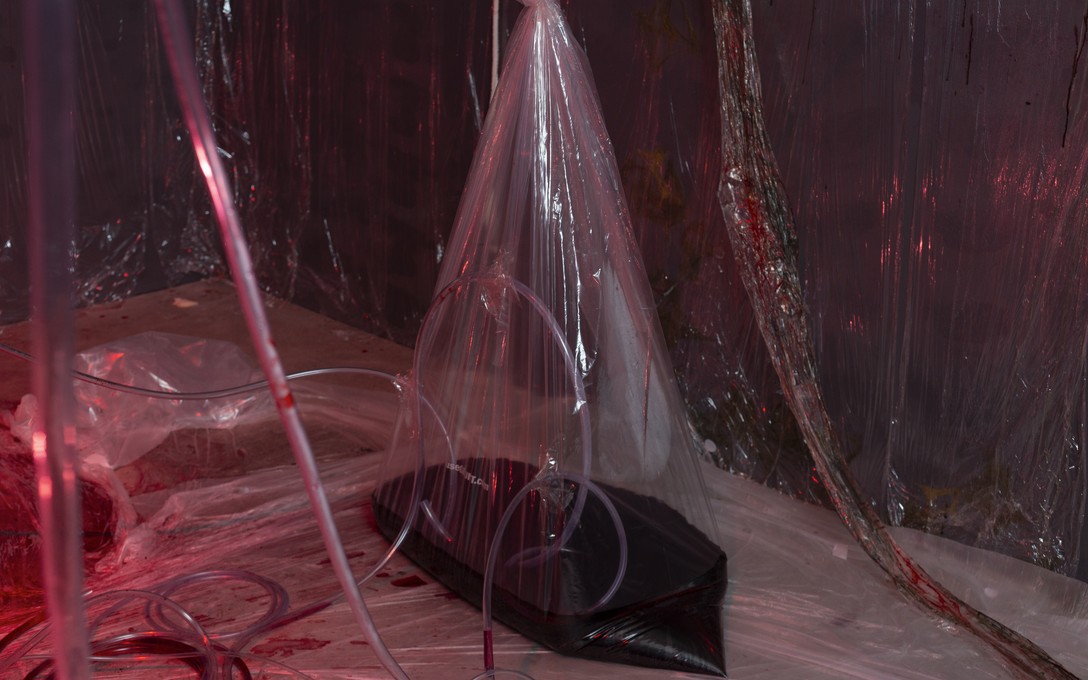
Fetishini, Blood, detail. Image courtesy of Cheska Brown.
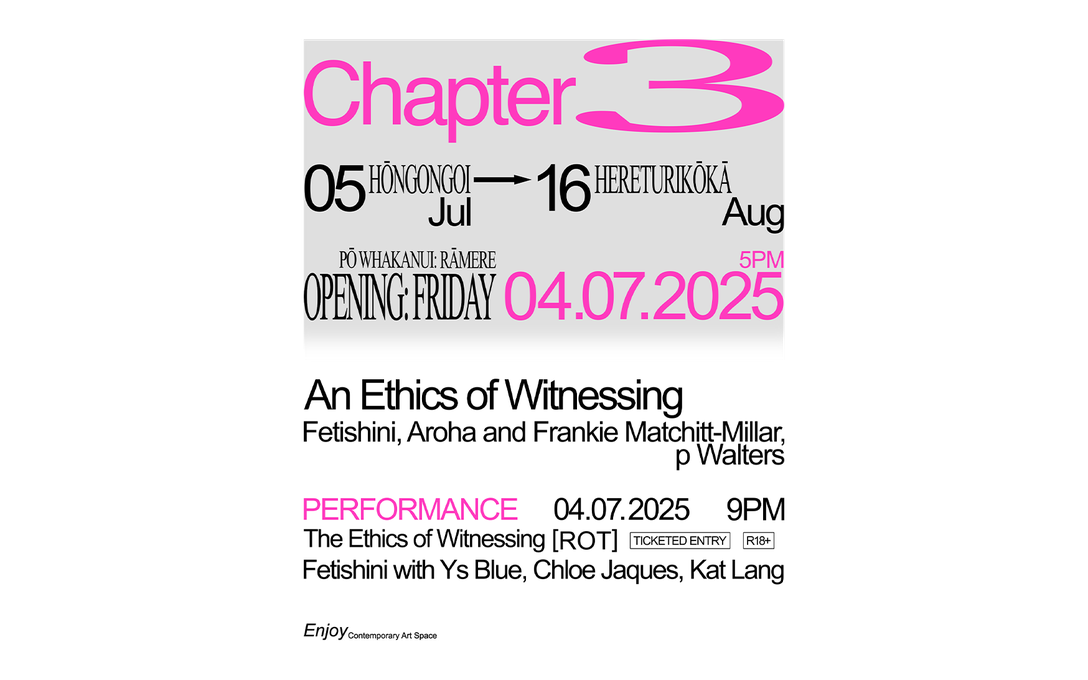
Graphic designed by Joe Locke.
ABOUT THE ARTISTS:
Fetishini is a queer, non-binary performance artist whose work navigates the borders of abjection, desire, and identity. Rooted in lived experiences of dysphoria, neurodivergence, and queer embodiment, their practice explores how we define ourselves by rejecting what is considered dirty, shameful, taboo, or threatening to bodily and psychic coherence.
Beginning their creative journey as a drag artist, Fetishini’s work has evolved into performance that entangles body horror, fetish, and emotional intensity. Navigating the slippery terrain where desire and revulsion coexist, Fetishini confronts sanitised cultural narratives about bodily coherence and identity.
Their performances are ritualistic encounters with what we are meant to disown—staging intimacy with shame, fetish, body horror, and emotional excess. In doing so, they offer a kind of exposure therapy through art: not to cure, but to coexist with what we are told to hide.
Aroha Matchitt-Millar (Ngāti Rangitihi, Te Whakatōhea, Tūhoe) is a multidisciplinary artist with strong foundations in contemporary jewellery and raranga. Her work is influenced by the practices her tīpuna used, intrinsically passed down through whakapapa.
Using feathers, feet, wings, and bones, Aroha creates contemporary jewellery, influenced by urban Māori 'Hori Chic' style. The intimacy of the process of skinning and pelting manu is both cathartic and repairing, recognizing the role colonisation had in separating Māori from these taonga while whatu-ing the strands of whakapapa back together. Her mahi is a rats tail reclamation to climb te ara a Whaititiri and have a cuppa with her nan.
Frankie Matchitt-Millar is a multidisciplinary artist based in Te-Whanganui-a-Tara. Through his work Matchitt-Millar explores his takatāpuhitanga alongside his Māoritanga, through embodied making. Connection to audience is an integral part of Matchitt-Millar’s making; reindigenising the realm of performance and creating accessible mahi to his community.
p Walters is a taniwha, local to the Kingdom of South Auckland and beyond, with wings and bones stretching across from Aotearoa and to various islands of Tonga. Their work reflects their dissidence to the colonial imagination and legacy of “new zealand” and their devotion to venerating their queer & othered body.
Graduating with BFA First Class Honours in 2022 from Waipapa Taumata Rau University of Auckland, they practice collectively & individually throughout the motu & Moana via curation, exhibition making, public programming, writing, connecting, and more.
